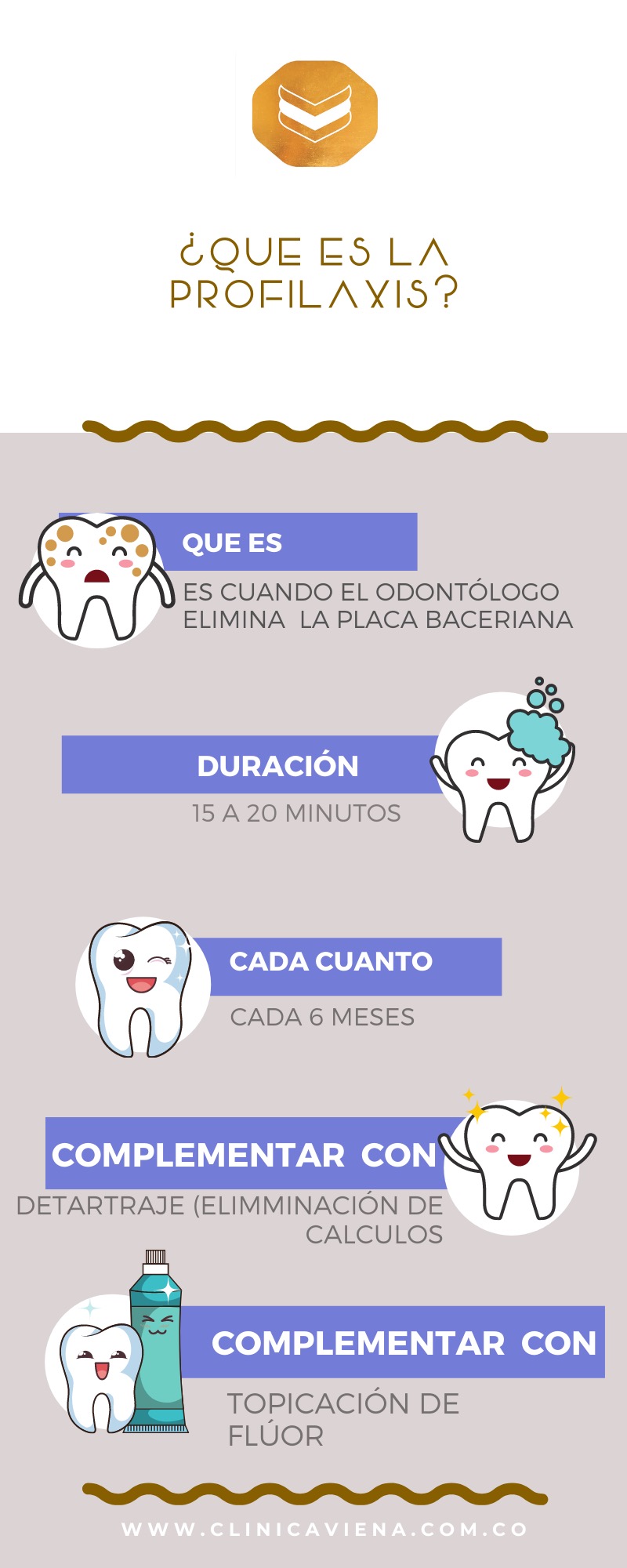In this article, you’ll find answers to all your queries related to dental prophylaxis. You’ll learn about what it entails, how frequently it should be done, and what it does not involve. Many patients often confuse it with other treatments, and I’ll ensure that you have a clear understanding of what it actually is.
What is dental prophylaxis?
Among all the parts of our body, the mouth harbors the highest concentration of bacteria. Soon after we consume our food, a bacterial layer known as plaque starts developing in our mouth. Over time, this plaque produces acid which triggers dental sensitivity and weakens the enamel, rendering it more susceptible to cavities.
During a dental visit, the dentist performs a dental prophylaxis procedure where the bacterial plaque is removed from all surfaces of the teeth using specialized tools such as a miniature brush or a rotating rubber cup. A prophylactic paste containing specific components is applied to all teeth during this process, which typically leaves a pleasant taste in the mouth such as strawberry or mint. Prior to the prophylaxis, a revealing liquid may be applied to children’s teeth to quickly identify spots of bacterial plaque, with the intensity of the staining indicating how long the plaque has been present. The procedure is then carried out with extra attention given to the stained areas, making it easier for patients to understand how to improve their oral hygiene.

How long does a dental prophylaxis take?
The duration of dental prophylaxis generally ranges from 15 to 20 minutes and may vary depending on the extent of dental plaque that needs to be eliminated.
How often should dental prophylaxis be performed?
To avoid the accumulation of dental plaque and the development of cavities, it is recommended to undergo dental prophylaxis every six months.
What is not dental prophylaxis
Patients often tend to confuse dental prophylaxis with other procedures such as scaling (calculus removal) or teeth whitening, which may come at varying costs. Therefore, in this blog, I aim to clarify that these are distinct procedures with differing purposes
- It is not scaling (calculus removal):
Although scaling is often performed alongside prophylaxis, the two procedures are quite distinct from one another. Scaling is carried out using specialized instruments such as curettes or ultrasound equipment and aims to eliminate calculi – a form of bacterial plaque that hardens over time, making it difficult to remove through regular brushing or prophylaxis. In contrast, prophylaxis focuses on eliminating soft bacterial plaque only.
Typically, both scaling and prophylaxis are carried out in a single appointment, with the scaling being performed first and followed by prophylaxis to complete the procedure. At the end of these procedures, one usually experiences a sense of freshness and complete cleanliness in the mouth. Areas that were previously rough to the touch now feel smooth and soft when the tongue is run over them.
- It’s not teeth whitening
There is a common misconception that dental prophylaxis can result in teeth whitening. However, it is important to note that these procedures are vastly different from one another. While it is true that dental plaque can contribute to teeth appearing more yellow, and that prophylaxis can remove certain stains at the time of the procedure, teeth whitening is an entirely separate process that typically requires several appointments to achieve the desired results.
As a dental professional, I typically advise my patients to opt for combined whitening, which involves using whitening trays in conjunction with LED whitening. This approach tends to yield more stable and longer-lasting results with minimal sensitivity. However, it is important to note that prophylaxis and scaling should always be carried out prior to undergoing any teeth whitening procedure, as these treatments complement one another and help to ensure the best possible outcome.
- It is not dental polishing or design maintenance:
For patients who have undergone smile design, regular maintenance procedures are necessary to keep their smile looking its best. In addition to prophylaxis and scaling, these patients may also require periodic LED whitening appointments and polishing with specialized discs and pastes to maintain the shine of their teeth.
It is important to understand that prophylaxis alone is not enough to keep a smile design free of stains or to maintain its shine. Regular maintenance appointments are crucial for maintaining the health and beauty of the teeth, and can help to prevent more extensive dental treatments down the road.
If you are due for a prophylaxis or other dental maintenance appointment, don’t hesitate to schedule an appointment with a specialized dentistry. Their team of experienced professionals can help you to achieve and maintain a healthy, beautiful smile for years to come.
- Smile Confidently: A Comprehensive Guide to Orthodontics Without Braces
- Natural Relief for Gum Bleeding: 7 Home Remedies to Try Today
- Smile Makeover Gone Wrong: How to Spot the Signs of a Poorly Done Smile Design
- Breaking Down Dental Fractures: A Guide to Treatment and Recovery
- Show off Your New Smile Design care: Essential Tips for Caring

